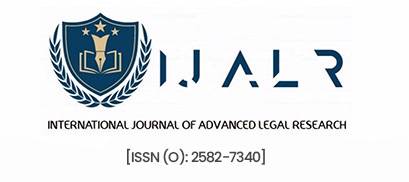Abstract
This article talks about how businesses in different countries around the world find a balance between making money and following the rules of corporate governance. It compares regulatory frameworks and anti-fraud measures to see how companies deal with compliance costs while still looking out for the interests of their stakeholders. The study offers insights and recommendations for adaptive governance that promotes sustainable growth while ensuring accountability.
INTRODUCTION
“Management is doing things right; leadership is doing the right things.”-Peter Drucker
The rules, practices, and processes that businesses use to run and control themselves are called corporate governance. It includes the links between a company’s management, board, shareholders, and other stakeholders, which help people make decisions and hold others accountable. Corporate governance is more important now than it was a few decades ago because investors know more about it, regulators are paying more attention to it after big corporate scandals, and business models are getting more complicated.[1]Governance has a lot to do with the need to follow anti-fraud rules. These rules keep businesses and markets safe from dishonest behaviour that can hurt trust and make people less likely to invest. The main goal of strong corporate governance and anti-fraud measures is to get managers to be responsible, accountable, and open. Good governance systems make sure that shareholders and other stakeholders are safe, that risks are handled carefully, and that the company does what is right and legal. Good anti-fraud rules also make it less likely that people will lie about their money, use their insider knowledge to get ahead, or do other dishonest things. This keeps the capital markets honest and makes businesses feel more confident.[2]
But businesses often have to spend a lot of money to follow these rules and laws. These costs include money spent on internal control systems, audits, board oversight, compliance monitoring, reporting, and defending against lawsuits. Also, strict rules can make procedures more complicated, slow down the process of making decisions, and limit the freedom of managers to make choices.[3]Compliance issues are even worse for small businesses or companies in emerging markets because they don’t have as many resources or institutional support. As a result, the goal of strict compliance may sometimes get in the way of a company’s main goal of making money and growing. Companies all over the world face the compliance-profit dilemma, which is the tension between the need to follow rules and the desire to make as much money as possible.[4]Following governance codes and anti-fraud laws lowers the chances of losing money, hurting your reputation, or getting in trouble with the law. It builds trust among investors and gives companies access to capital, which can raise their value over time. On the other hand, a compliance system that is too strict or expensive can take resources away from productive activities, make it harder to compete, and make operations more complicated. Managers and directors must deal with these two opposing forces and try to come up with governance strategies that protect stakeholders without hurting financial performance too much.
The world shows that there are many different ways to keep this balance. Some places use principles-based governance, which gives them more freedom through things like the “comply or explain” framework.[5]This method pushes businesses to do things the right way, but it also lets them say why they don’t have to when their situation is different. Some countries have rules that are stricter and must be followed exactly. They also often have strong ways to make sure people do.[6]Each system demonstrates the influence of legal traditions, cultural norms, market maturity, and institutional frameworks on how companies manage compliance obligations and profitability challenges.
In the last few years, it has become even harder because businesses are quickly going digital and using the latest technologies for governance and compliance. Digital innovations give us tools to keep an eye on things better, find fraud in real time, and be more open, which could make it cheaper to follow the rules. But they also come with new risks, such as cyber fraud, data breaches, and trouble following the rules about data privacy and doing business across borders. As technology changes, both businesses and regulators need to change too.
[1] Organisation for Economic Co-operation and Development (OECD), Corporate Governance Principles, 2015.
[2] Securities and Exchange Board of India, Annual Report on Corporate Governance, 2024.
[3] Financial Stability Board, Guidance on Anti-Fraud Frameworks, 2022.
[4] KPMG India, “The Evolving Face of Corporate Fraud: Insights from the Frontlines,” June 2025.
[5] Coates IV, J.C., “The Goals and Promise of the Sarbanes-Oxley Act,” Journal of Economic Perspectives, 2007.
[6] Armstrong, C.S., Guay, W.R., and Weber, J.P., “The Role of Information and Financial Reporting in Corporate Governance and Debt Contracting,” Journal of Accounting and Economics, 2010.

